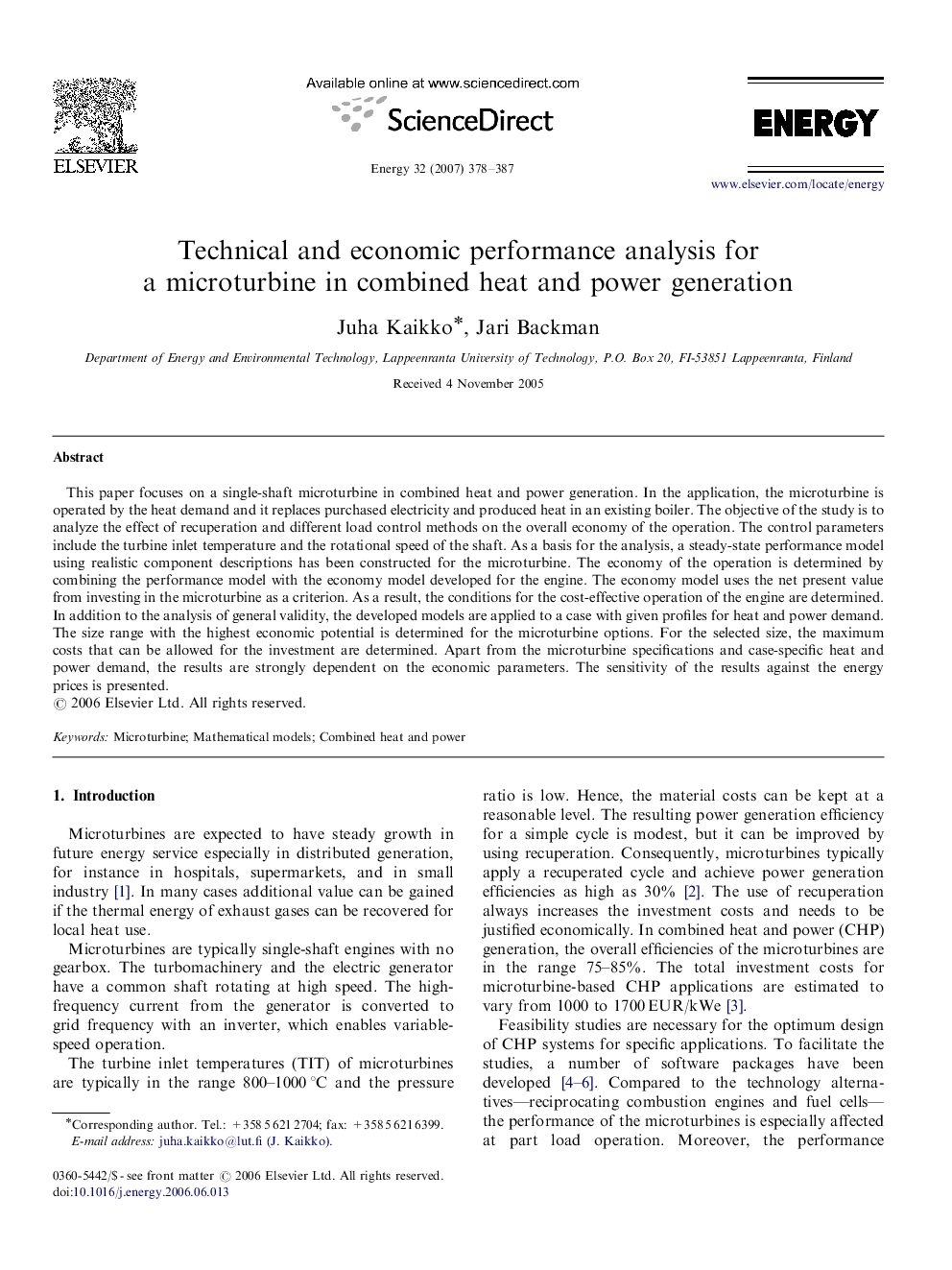| کد مقاله | کد نشریه | سال انتشار | مقاله انگلیسی | نسخه تمام متن |
|---|---|---|---|---|
| 1736052 | 1016204 | 2007 | 10 صفحه PDF | دانلود رایگان |

This paper focuses on a single-shaft microturbine in combined heat and power generation. In the application, the microturbine is operated by the heat demand and it replaces purchased electricity and produced heat in an existing boiler. The objective of the study is to analyze the effect of recuperation and different load control methods on the overall economy of the operation. The control parameters include the turbine inlet temperature and the rotational speed of the shaft. As a basis for the analysis, a steady-state performance model using realistic component descriptions has been constructed for the microturbine. The economy of the operation is determined by combining the performance model with the economy model developed for the engine. The economy model uses the net present value from investing in the microturbine as a criterion. As a result, the conditions for the cost-effective operation of the engine are determined. In addition to the analysis of general validity, the developed models are applied to a case with given profiles for heat and power demand. The size range with the highest economic potential is determined for the microturbine options. For the selected size, the maximum costs that can be allowed for the investment are determined. Apart from the microturbine specifications and case-specific heat and power demand, the results are strongly dependent on the economic parameters. The sensitivity of the results against the energy prices is presented.
Journal: Energy - Volume 32, Issue 4, April 2007, Pages 378–387